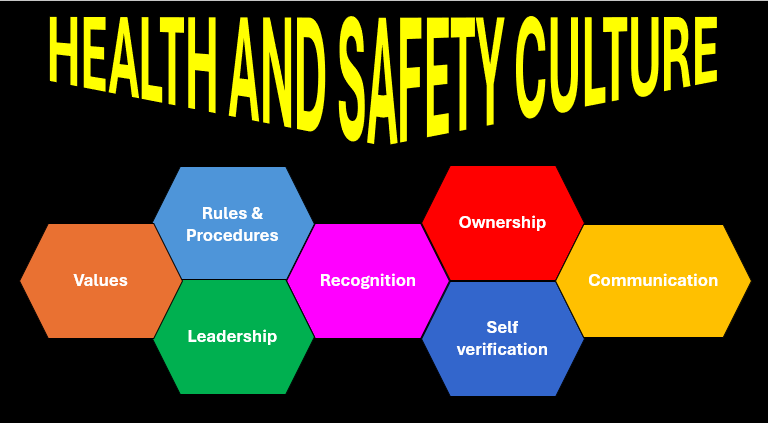SHERG Magazine
Health and Safety Culture in the Workplace?
- October 14, 2024
- Posted by: Editor
- Category: Miscellaneous
No Comments

A health and safety culture are the shared set of beliefs, values, and attitudes that shape how individuals and groups within an organization approach safety and prioritize their employees’ well-being.
Characteristics of a Strong Health and Safety Culture:
- Leadership Commitment: Top-level executives must demonstrate a visible and unwavering commitment to safety.This includes setting clear expectations, providing resources, and leading by example.
- Employee Involvement: Employees should be actively involved in identifying and addressing safety concerns.This can include participation in safety committees, reporting hazards, and suggesting improvements.
- Open Communication: There should be open and honest communication about safety issues at all levels of the organization.
- Training and Education: Regular training and education help employees understand safety procedures and best practices.
- Risk Assessment and Management: A proactive approach to risk assessment and management helps identify potential hazards, assess, and control, and implement measures to mitigate them before they lead to incidents.
- Incident Investigation: Thorough investigation of incidents helps identify root causes and prevent future occurrences.
- Continuous Improvement: Safety is seen as an ongoing process, constantly focusing on improvement.
Benefits of a Strong Health and Safety Culture:
- Improved Employee Morale: Employees who feel safe and valued are more likely to be satisfied with their jobs and committed to the organization.
- Reduced Accidents: A positive safety culture can significantly reduce the number of workplace accidents and injuries.
- Improved Productivity: A safe and healthy workplace can lead to higher employee morale and productivity.
- Enhanced Reputation: A positive safety reputation can attract and retain top talent.
- Positive reputation: Organizations with strong safety cultures often have a better reputation in the community
- Legal Compliance: A strong safety culture helps organizations comply with health and safety regulations.
By fostering a positive health and safety culture, organizations can create a workplace where everyone feels valued, protected, and empowered to contribute to a safer and healthier environment.
Summary of a health and safety culture – the essence of how a shared mindset and commitment can influence workplace behavior and outcomes.
